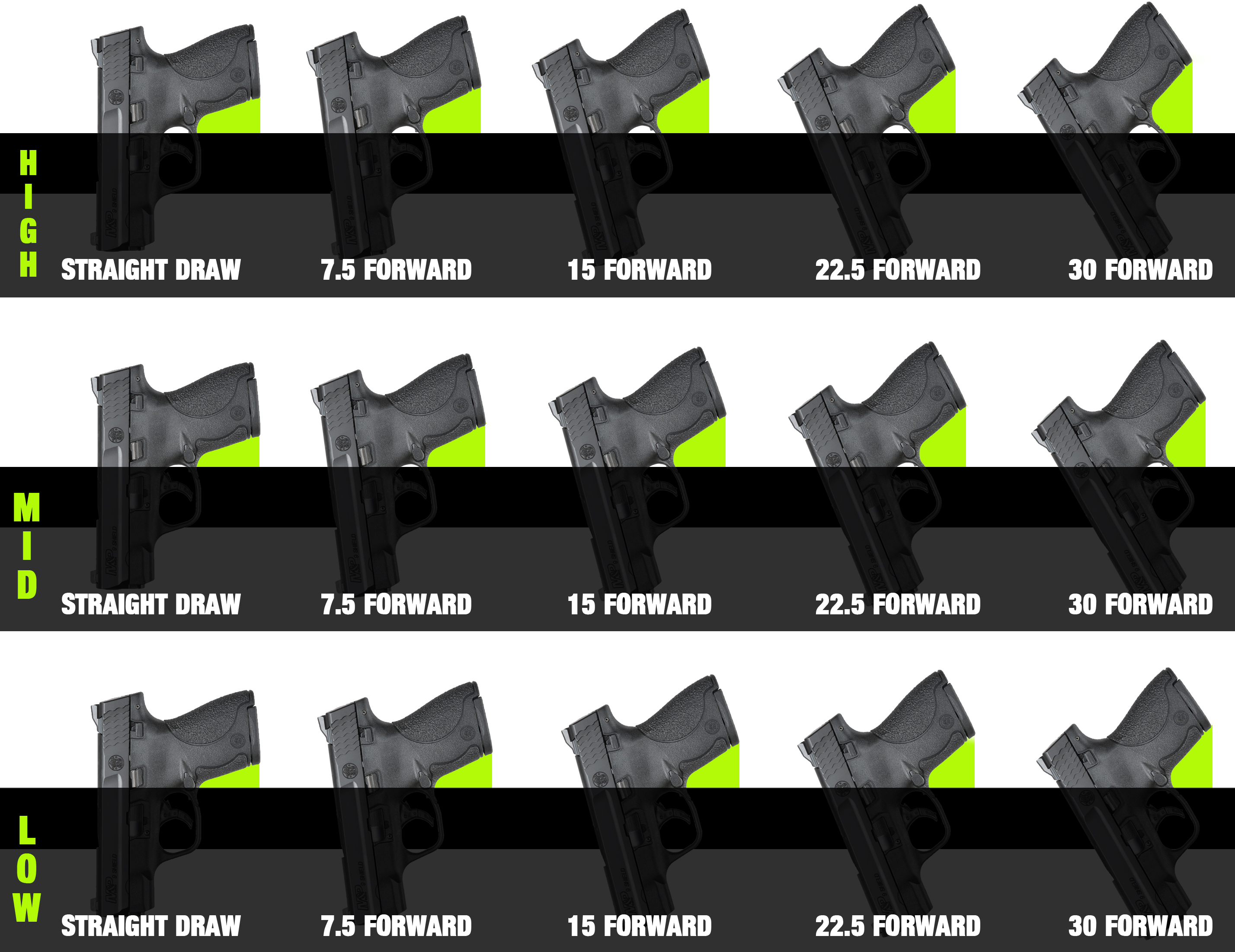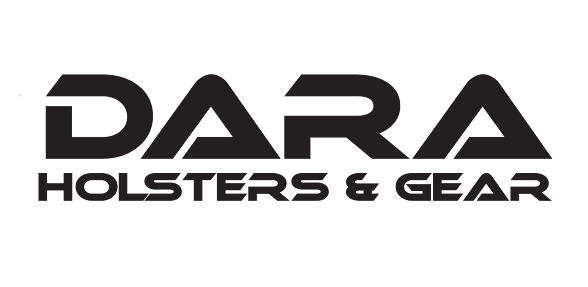AIWB and IWB Holster Recommendations for New Carriers
Let's talk holsters- specifically Inside the Waistband Holsters for those new to Concealed Carry.
Choosing Your First Carry Gun
With so many options on the market, trying to narrow it down can be be exhausting and down right confusing. You don't want to end up being that guy with a drawer full of holsters, but you don't want to settle with something cheap or uncomfortable.
The drawer full of holsters seems to almost be a right of passage for seasoned concealed carriers, but really, the only thing it leaves you with is knowing what not to buy and an empty wallet.
But what if you could forego the headache and find the perfect holster right off the bat? Keep reading...
First, you need to know what gun you plan to carry. A single stack subcompact is usually a great choice for a first time carrier as they're slim and easily concealable. There are tons of really great subcompact firearms to choose from, such as: M&P Shield, Glock 43 or 43x, XDS 3.3, Glock 42, PPS, PPS M2, P938, Micro 9, etc. The rule of thumb is to start out smaller and eventually work your way up until you're comfortable concealing a larger firearm.
Be considerate when choosing your first carry gun. Be wary of good deals on oddball guns at the gun show or local gun shop- there isn't a holster mold available for every gun ever made, so try and stick to the more popular firearms, as there will be more options available to you.
After you've chosen your first firearm to carry concealed, search Google for "(name of firearm) holster". This will give you a list of companies to work with while deciding how you want to carry. Save the links to these websites for later on, after you figure out what carry position suits you best.
Choose How You Want to Carry
Figuring out how you want to carry isn't complicated. You just have to keep an open mind. Once you've got your gun in hand, unload it and put the empty magazine back in. (You'll need the magazine in, as it adds a bit of length and you;ll need that to see how well you can conceal). Try various positions in the waistband, at different cants and heights and try to figure out what is comfortable and concealable under a shirt. Don't rule out anything at this point, consider: Appendix Carry, Cross Draw, Hip Carry, Small of Back, etc.
Once you've gotten a good idea of what you want, make sure that position is comfortable while bending and sitting. You always want to make sure that your pants are at the proper height, not sagging, so that the gun bends with you when sitting. Low wasted pants usually spell trouble for concealed carry as they can often cause discomfort due to the gun's position and can sometimes cause printing.
Choose Which Type of Holster You Want
Now that you've figured out your carry position, you can start shopping for a holster. Go back to that list of holster companies and check out what they're offering. Here are the different types of holsters on the market right now:
-Full Kydex
-Hybrid w/Leather
-Hybrid w/Specialty Fabric
-Hybrid w/Nylon
-Nylon
-Leather
The differences between these holsters are significant. We're obviously partial to full Kydex holsters. After extensive testing it's the only material that really holds up over time and doesn't cause any damage to the firearm. Materials like leather and nylon hold onto moisture and will eventually ruin the finish of the firearm, while Kydex is softer than most firearm finishes and doesn't hold any moisture.
Kydex is also stronger, lasts longer and doesn't require a break in period. These thermoform polymer holsters also retain the firearm better than the aforementioned alternatives, as retention comes not only from the molding of the material to the specific firearm model, but also usually comes adjustable from the more reputable holster manufacturers.
If after taking a look at each of the holster styles, you haven't come to a definitive decision on which style to choose, you can also swing by your local gun shop to see what they've got in stock. Gun shops usually do a good job of keeping a little bit of everything, so you can at least see what each holster option looks and feels like.
Choosing a Carry Method based on Activity, Body Type and Ability
If you're able to narrow down the type of holster you prefer, you're halfway there! If you're still unsure about both position and type of holster, consider this: if you are at a job that requires you to constantly bend or sit, you'll want to try either appendix carry or small of back carry. These positions tend to be more comfortable when bending.
If you walk around a lot, any position is possible. Narrowing it down may depend on your body type and how you dress. If you've got a belly, you may want to consider carrying at the hip or slightly behind, as appendix carry may be uncomfortable. If you have any wrist, back or shoulder injuries, we've found that carrying at the small of back with your palm facing out can be the most easy and comfortable way to carry.
There are also holster options that are adjustable for various carry positions, such as our Minimalist holster. This holster comes with an adjustable cant angle and removable claw. Adjustable cant angles. when executed correctly, can really help. You'll want a straight or reverse cant for appendix carry, and a straight or slight forward cant for hip carry. Being able to switch between cant angles provides you with more options and versatility- something very important in a first time concealed carry holster.
Position-Specific Holsters
The Claw that we mentioned previously, is a common attachment found on Appendix Holsters that when utilized correctly, works with the belt to push the grip into the body. This can be a really great aid in concealment, but you do have to make sure that the holster you receive has the claw mounted correctly. If the claw doesn't align properly with the belt, it'll end up slipping underneath and causing some awkward printing.
Keep in mind, that if you've discovered the only way to conceal a gun is to have a holster that has a low ride height (sits low in the pants) you won't be able to have a holster with a claw. The claw has to be mounted below the trigger guard, and also has to align with the clip. A low ride height places the clip higher on the holster, but you can't get the claw to align any higher without running into the trigger guard. Appendix Holsters that come with a claw tend to have a higher ride height.
If you need a lower riding holster to conceal a gun, also keep in mind that the lower the ride height, the more buried the grip can become. The more buried the grip, the slower your draw will be. Try to find a happy medium between concealability and accessibility.
Most custom holster companies will be able to help you find the correct holster in the position you prefer. Many times, I'll have the customer send a picture of exactly how they want the holster to ride, and attach it to their work order so the guys in the back can see what they want.
Custom Holsters
To ensure you are making the correct choice in holsters, follow these simple steps:
A straight draw (zero cant) is usually recommended across the board. Ride height will depend on what you found when experimenting with your empty firearm. Before purchasing a holster, check to see if the company offers a ride height chart, as these are not universal heights. One companies low ride could be another companies high ride!
Hip Carry can be worn a lot of different ways. Again, ride height will depend on your body type and the position you discovered when trying out different positions. Usually a straight or slight forward cant angle is most common in this position. Our most popular specs for hip carry is a mid ride height and 7.5°-15° forward cant.
For Behind the Hip:
The rule of thumb is the further behind the hip you carry, the more canted you'll want the holster to be. If you plan to carry at 5 o'clock, you'll want a 15° cant angle. For small of back, anything can go, we usually see 22.5° cant angles at 6 o'clock.
This position is a bit controversial for two reasons. One is because you can potentially flag yourself when drawing. Two is because it could cause a spinal injury should you fall. However, sometimes customers with pre-existing injuries cannot draw comfortably from any other position and choose to carry this way, rather than not carry at all.
Small of back can be carried two ways: palm in or palm out. Palm in, is essentially a hip holster worn at 6 o'clock, while palm out is a reverse handed holster with a reverse cant angle to tilt the grip towards your draw hand.
See this ride height and cant angle chart:


See the neon green? That shows you the grip space. If you have large hands, go for the ones with more green under the grip!
While good custom holster companies will offer a TON of cant angle options, it doesn't mean that every combination will work flawlessly. Pay attention to what you're choosing- it's up to you to decide what will work.
Other things to Consider:
Along with finding a proper holster, you may need to upgrade your belt. A standard everyday belt that holds your pants up may not do a good job of holding up a fully loaded firearm. If you have a thin crappy belt, the holstered gun will likely tilt forward and cause printing. You'll instinctively want to tighten the belt to prevent the gun from tilting outwards, but this will only cause discomfort with a thin belt. Go spend $40 on a gunbelt and solve the problem before it's an issue.
Another aspect of concealed carry you'll want to consider is your daily attire. If you are required to wear business casual or a tucked in shirt everyday, you'll want to invest in a tuckable holster. This will make life and concealed carry considerably easier.
Conclusion:
Finding a holster requires research. Don't settle for something on ebay or amazon, just because they're cheap and returnable. These companies usually have a high turnover rate and their holsters are massed produced with no customization options. There's a phrase that most seasoned concealed carriers use in regards to buying holsters... "buy once, cry once". Go for quality, reputation and warranty. Spending a little extra really does go a long way!
Questions or Comments? Sound off below!




Comments
Post a Comment